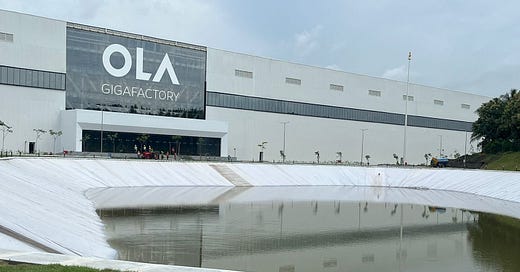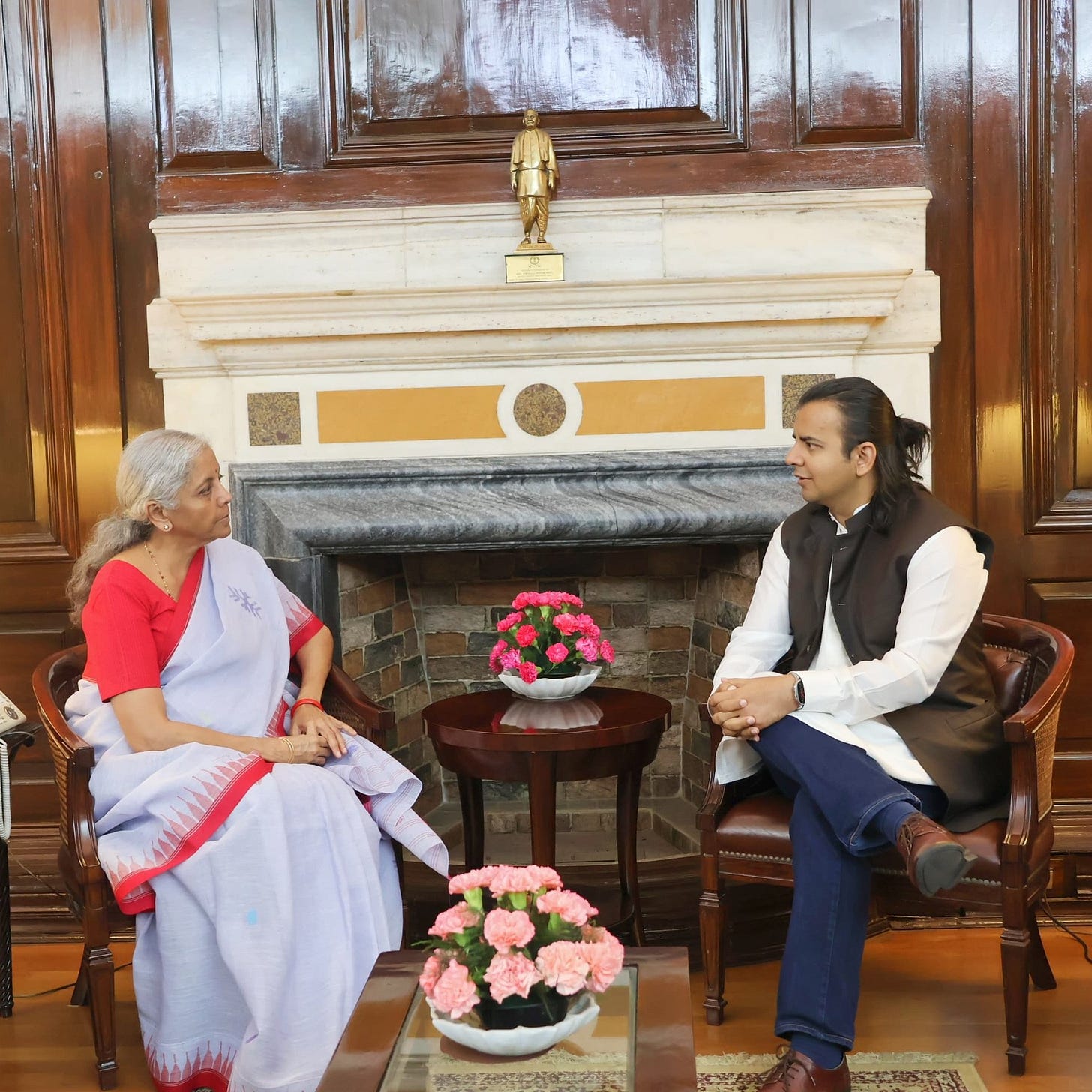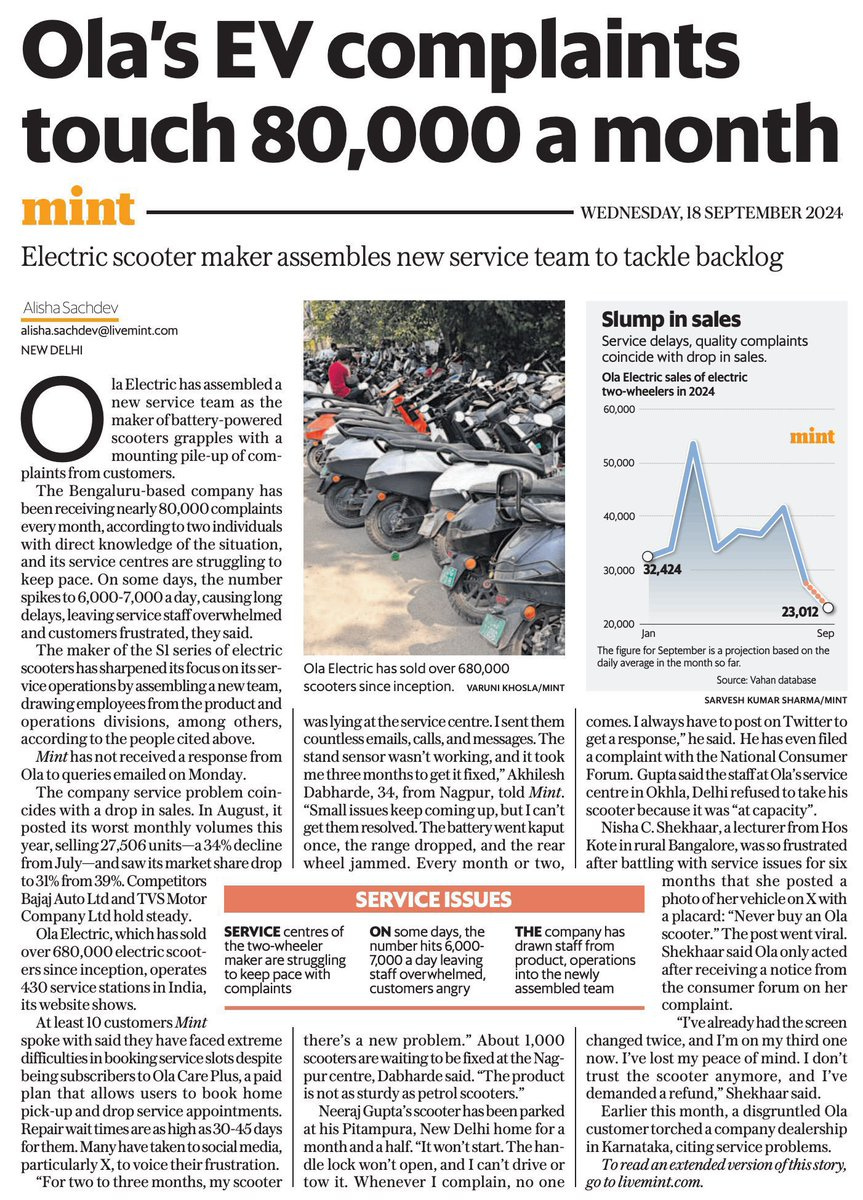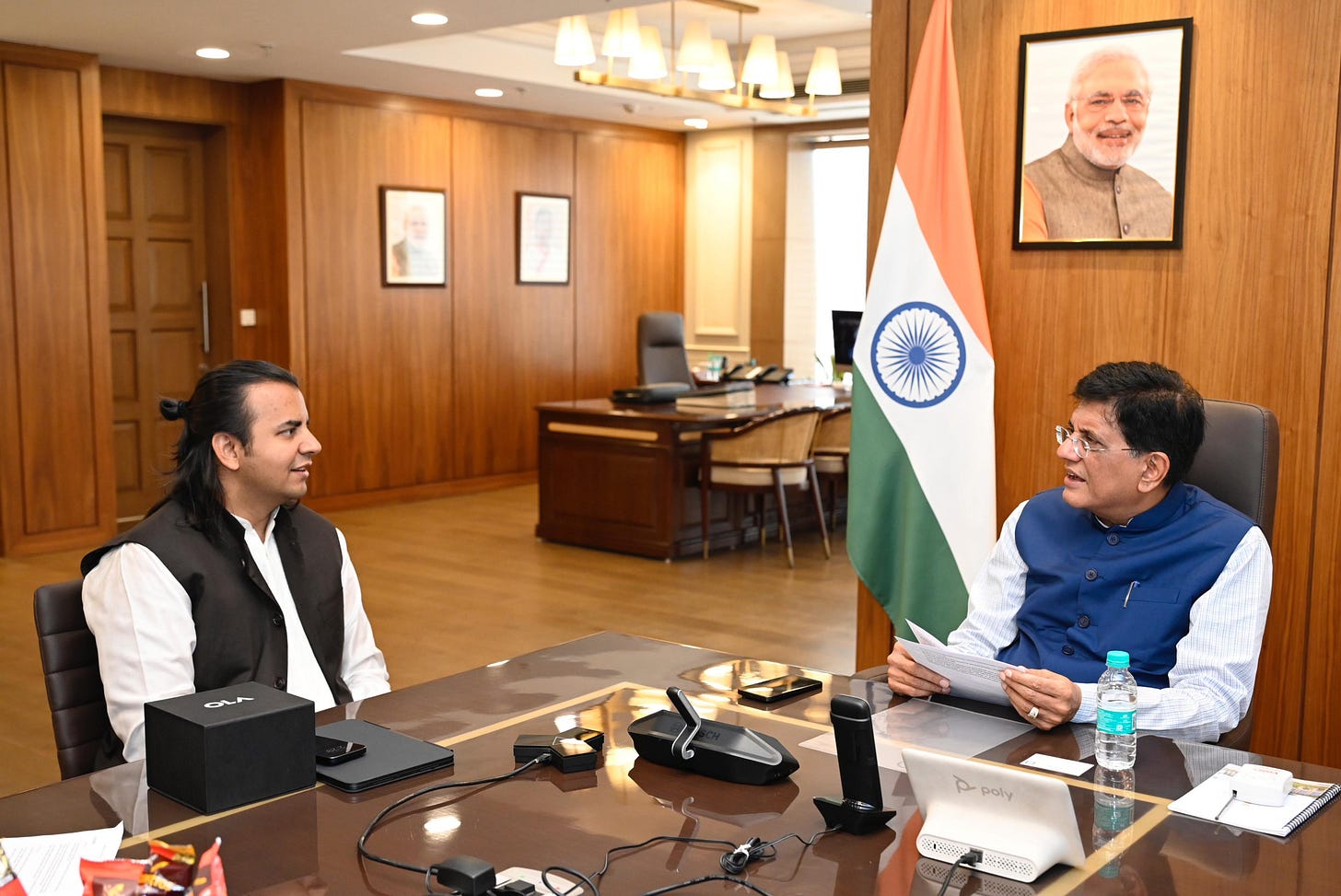Ola Electric Stock on Fire, and So Are Its Batteries?
Ola Electric's Pre- and Post-IPO Journey: Navigating Stock Market Turbulence, Battery Short Circuits, Comedian’s Barbs, and a Surge in Consumer Complaints.
Ola Electric and its Charismatic CEO
Ola Electric, under the leadership of its dynamic and innovative CEO, Bhavish Aggarwal, has quickly risen to prominence in India’s electric vehicle (EV) market. Hailing from Ludhiana, Punjab, Aggarwal’s early exposure to a business-oriented environment laid the foundation for his entrepreneurial ambitions. An alumnus of IIT Bombay, where he earned a degree in Computer Science Engineering in 2008, Aggarwal’s vision has driven Ola from its groundbreaking entry into the high-tech EV sector to a highly successful initial public offering (IPO). Ola Electric has positioned itself as a key player in India's electric mobility revolution, with Aggarwal’s strong alignment with the “Make in India” initiative further bolstering its appeal. The company’s promise to reshape the EV landscape has sparked— pun intended— interest among consumers and investors alike.
However, despite the initial excitement, Ola Electric’s journey has been met with significant challenges, particularly regarding the quality and safety of its products.
The Fire Incidents: Growing Safety Concerns
Ola Electric has faced increasing scrutiny due to multiple reports of its electric scooters catching fire. Incidents in Pune and other parts of India have made headlines, with customers raising alarms about the safety of the vehicles. For example, in March 2022, an Ola S1 Pro scooter caught fire in Pune, leading to a recall of over 1,400 units. Another fire incident occurred in October 2023 in Pimpri Chinchwad, which Ola Electric attributed to aftermarket parts being used in the vehicle. However, the broader issue of battery safety remains a major concern.
The company’s response to these fire incidents has often been slow or deflective, with statements blaming external factors rather than addressing core issues with product safety. These incidents have not only tarnished the company’s reputation but have also sparked fears among potential customers, who expect better safety standards from a brand championing high-tech innovation.
Shoddy Service at Ola Service Centres
Adding to Ola Electric’s woes is the shoddy service reportedly provided at its service centres. Numerous complaints have surfaced about long waiting times, delayed repairs, and poor after-sales support. Ola customers have expressed frustration with the company's service centres, where scooters reportedly languish for weeks before being attended to. These issues are compounded by a lack of professionalism and the slow resolution of complaints, which further exacerbates customer dissatisfaction.
Customers have raised concerns about recurring defects, faulty parts, and inadequate warranty services. Many have also reported being overcharged and receiving inaccurate invoices. For instance, one common complaint is that customers are billed during the free service period, or their warranty claims are outright denied without sufficient explanation. This has led to a growing sense of disillusionment among consumers, as the promise of a seamless electric vehicle experience is marred by poor customer service.
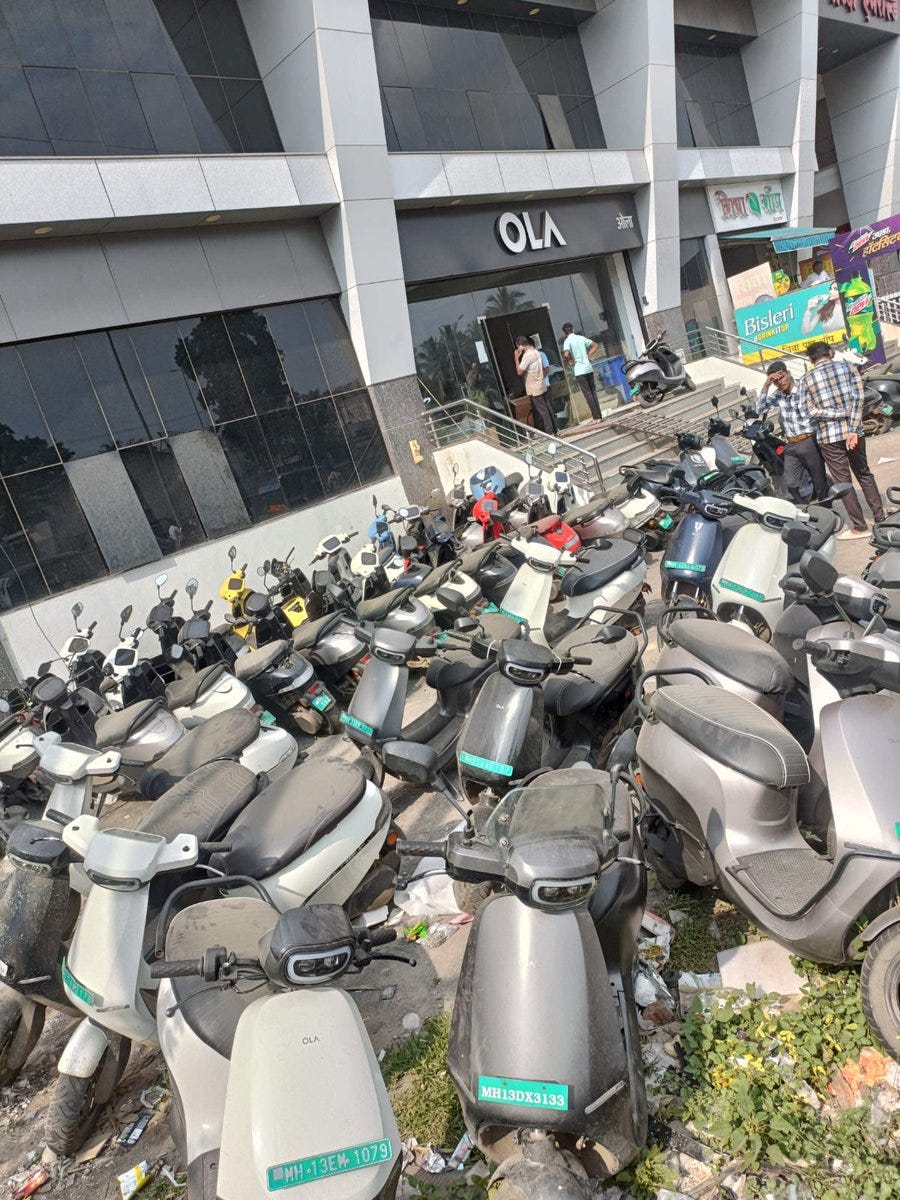
Consumer Complaints and Regulatory Action
Over the past year, consumer complaints against Ola Electric have skyrocketed. The Central Consumer Protection Authority (CCPA) has recorded over 10,000 complaints against the company between September 2023 and August 2024, covering issues such as delayed services, refusal of warranty claims, and unsatisfactory repairs. The National Consumer Helpline (NCH) has been flooded with around 80,000 complaints per month, which has led to long wait times for customers seeking redressal.
In response to this surge in complaints, the CCPA issued a show-cause notice to Ola Electric in October 2024, citing possible violations of the Consumer Protection Act, 2019. The Ministry of Road Transport and Highways is also monitoring the situation closely, with the possibility of further government action looming. While Ola Electric has pledged to improve its services, including forming a new service team, these steps have so far done little to alleviate the concerns of disgruntled customers.
CEO Bhavish Aggarwal’s Twitter Spat
As if the product and service issues weren’t enough, Ola Electric’s leadership also found itself in the midst of a public relations debacle. A Twitter war (see video) between Bhavish Aggarwal and comedian Kunal Kamra escalated when Kamra criticised the state of Ola’s service centres, sharing images of long queues of scooters waiting for service. Rather than addressing the issue with professionalism, Aggarwal responded sarcastically, accusing Kamra of posting paid tweets and inviting him to “help fix the problem.”
Aggarwal’s dismissive tone sparked widespread criticism, with many viewing his response as arrogant. While Kamra’s comments may have been provocative, Aggarwal’s failure to engage with the core concerns highlighted by the comedian only further damaged the company’s reputation. As a leader of a rapidly growing company, Aggarwal’s combative responses reflected poorly on Ola, amplifying the negative sentiment already surrounding the brand.
Stock Price Volatility: A Cautionary Tale
The fallout from the Twitter war, combined with ongoing service and safety concerns, had a noticeable impact on Ola Electric’s stock price. Following the public spat, the company’s shares experienced a sharp decline. While the stock had initially surged after the IPO, reaching impressive highs, it has since been marked by considerable volatility.
When Ola Electric debuted, the stock was listed at Rs 76 per share. It quickly saw a sharp rise, peaking around Rs 146 by mid-August 2024. However, after reaching this high, the stock price began fluctuating, reflecting the market's uncertainty. By early October 2024, the price had settled around Rs 90-91 per share.
This pattern illustrates an initial wave of enthusiasm, followed by market corrections. Despite the corrections, the stock has managed to maintain a level above its IPO price, but by early October 2024, it had dropped by nearly 9%, raising questions about the long-term sustainability of its post-IPO success.
Although it’s difficult to pinpoint whether the drop was directly linked to the controversy or broader market dynamics, the correlation between negative publicity and stock performance is evident. Investors, while initially enthusiastic, are now wary of the potential reputational damage that these controversies could inflict on Ola’s market standing.
The “Make in India” Dream: A Reality Check
Ola Electric’s ambitious alignment with the “Make in India” movement has resonated with many, but the reality of the company’s supply chain tells a different story. Despite its claims of promoting indigenous manufacturing, Ola continues to rely heavily on imported components, particularly from China. This raises concerns about the company’s long-term ability to deliver on its promise of a fully Indian-made electric vehicle.
Furthermore, with global giants like Tesla vying to enter the Indian market, Ola will face stiff competition. While its early strides in the Indian EV market are commendable, Ola must now focus on delivering quality, safety, and reliability to maintain its edge. The company must also ensure that its leadership evolves to match the demands of a global business landscape.
A Call for Responsible Leadership
Bhavish Aggarwal’s vision and ambition have brought Ola Electric to the forefront of India’s EV revolution. However, as the company grows, there is a pressing need for its leadership to mature. As a rapidly expanding enterprise, Ola Electric must focus on delivering not just innovation, but also safety, quality, and impeccable customer service.
While we do appreciate Bhavish Aggarwal's attempt to make ethnic kurtas chic and happening, as well as his never-say-die Punjabi spirit, his entrepreneurial drive remains inspiring. However, the recent controversies surrounding Ola Electric highlight the urgent need for more responsible leadership. A more measured and professional approach to addressing customer concerns, coupled with careful management of public relations, will be crucial for the company’s long-term success. Investors and consumers alike will be watching closely to see if Ola can rise above these challenges and chart a sustainable path for future growth.

